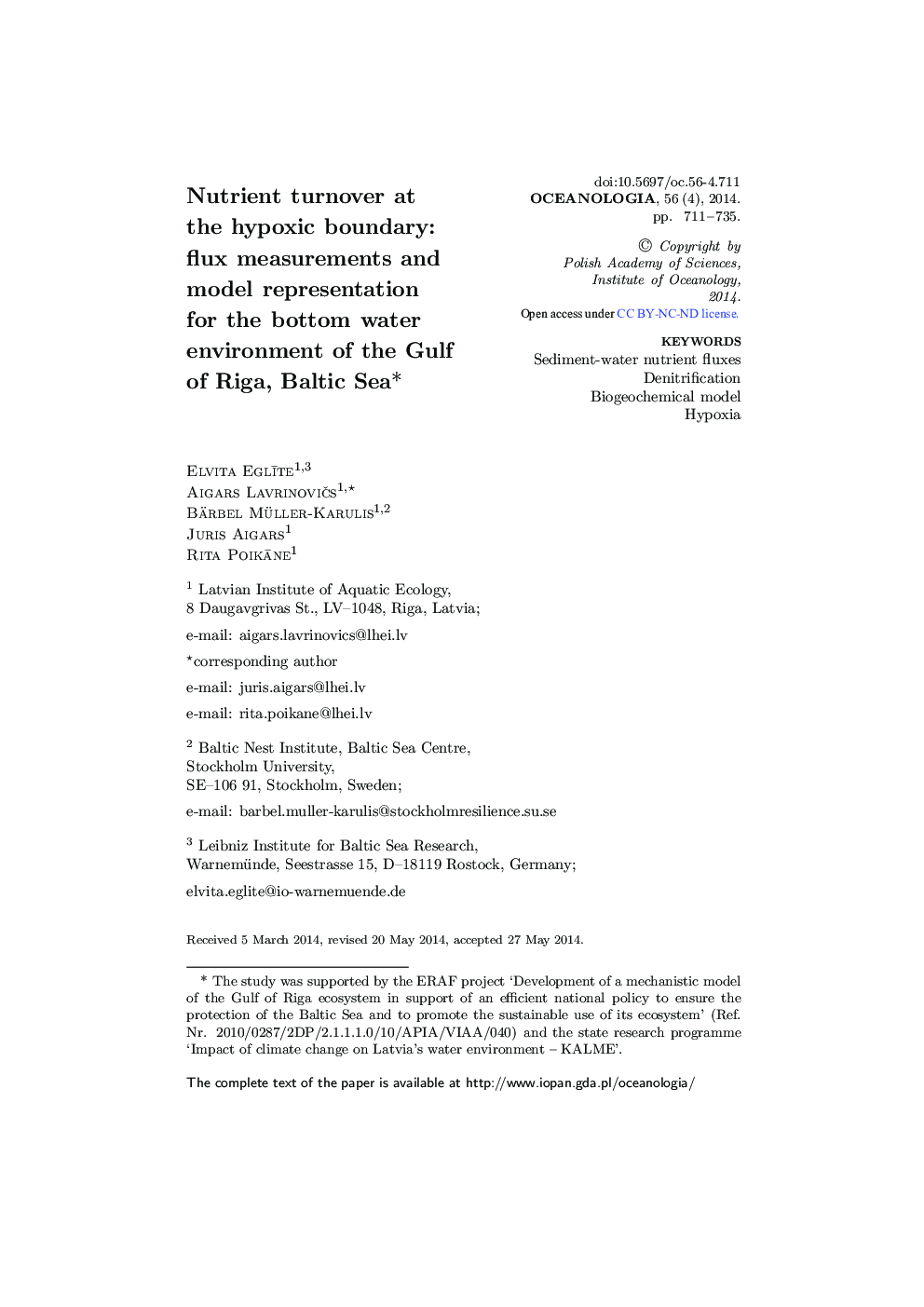| Article ID | Journal | Published Year | Pages | File Type |
|---|---|---|---|---|
| 2069746 | Oceanologia | 2014 | 25 Pages |
Experimental studies of intact sediment cores from the Gulf of Riga, Baltic Sea, were conducted to estimate the response of sediment nutrient fluxes to various near-bottom water oxygen conditions. The experiment was performed in the laboratory using a batch-mode assay type system on the sediment cores held at 4°C and oxygen concentrations maintained at 1, 2, 3, 4 and 5 mg l−1. The results from the experiment were subsequently used to optimise the fit of the sediment denitrification sub-model of the Gulf of Riga basin. Sediment- water fluxes of phosphate were low and directed out of the sediments under all treatments, demonstrating a general decreasing tendency with increasing nearbottom water oxygen concentration. The sediment-water fluxes of ammonium and nitrate + nitrite demonstrated opposing trends: ammonium fluxes decreased whereas nitrate + nitrite fluxes increased with rising near-bottom water oxygen concentration. The modelled fluxes agreed well with the measured ones, with correlation coefficients of 0.75, 0.63 and 0.88 for ammonium, nitrate + nitrite and phosphate fluxes respectively. The denitrification rate in sediments was simulated at oxygen concentrations from–2 to 10 mg l−1. At oxygen concentrations < 2 mg l−1 the modelled denitrification was sustained by nitrate transport from water overlying the sediments. With increasing oxygen concentrations the simulated denitrification switched from the process fuelled by nitrates originating from the overlying water (Dw) to one sustained by nitrates originating from the coupled sedimentary nitrification – denitrification (Dn). Dn reached its maximum at an oxygen concentration of 5 mg l−1.
